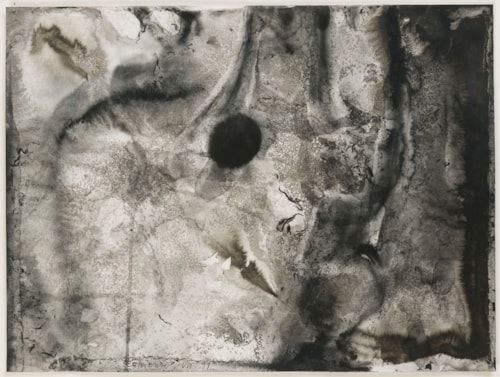
Gerhard RICHTER
1932
Biography
One of the most significant painters working today, Gerhard Richter was born in Dresden in the former East Germany and studied at the Hochschule für Bildende Künste there between 1952 and 1956. Much of his early independent commissions took the form of mural paintings for public buildings in Dresden. He moved to West Germany in 1961, settling in Düsseldorf and studying at the Staatliche Kunstakademie there. From 1963 he began inventorying his oeuvre in a self-organized catalogue raisonné, starting with a painting that he had completed the previous year and thereby choosing to ignore the work he had done in East Germany. In 1962 Richter produced his first photo paintings and began participating in group or joint exhibitions, alongside artists such as Konrad Lueg (later Fischer), Sigmar Polke and Blinky Palermo. He had his first solo shows in 1964. Two years later he began painting his first Colour Chart paintings, soon followed by monochrome paintings of corrugated iron and tubes, townscapes, clouds, mountains, shadows and grey compositions, as well as constructions made of glass. Throughout his career, Richter has painted purely abstract works alongside paintings of representational subjects, often based on photographs. He also worked as a draughtsman and printmaker. In 1970 he began exhibiting his work with Konrad Fischer, now an art dealer, and the following year a retrospective exhibition of his oeuvre up to that point was mounted at the Kunsthalle in Düsseldorf. Another large exhibition of his work was shown in the German pavilion at the 36th Venice Biennale in 1972, and in 1973 the artist received a commission to decorate the BMW corporate headquarters in Munich with three monumental paintings, in preparation for which he moved into a more spacious studio that allowed him to work on a much larger scale.
By the second half of the 1970s Richter’s reputation had spread beyond Germany, with numerous gallery and museum exhibitions in New York, Brussels, Amsterdam, Paris and London. The artist’s status continued to grow throughout the succeeding decade; in 1980 he produced his initial colourful abstract squeegee paintings and early in 1981 the first Mirrors (which were exhibited in a joint museum show with Georg Baselitz in Düsseldorf the same year), while in 1982 he began a series of Candle paintings. The following year he moved from Düsseldorf to Cologne. Further gallery exhibitions were held in Germany, Austria, Switzerland and England, as well as America and Canada, where a major travelling retrospective was mounted in 1988. Towards the end of the decade he began working on a cycle of canvases entitled October 18, 1977, based on press photographs of the German Baader-Meinhof urban terrorist group. The 1990s found Richter at the peak of his international success and firmly established as one of the most significant contemporary artists in Europe. He won numerous prizes and his works were acquired by major modern art museums throughout the globe. In 2002 Richter received a commission to design a monumental stained glass window for the south transept of the Cathedral of Cologne, which was eventually installed and dedicated in 2007. Between 2002 and 2003 a major retrospective entitled Forty Years of Painting, including nearly two hundred works, was shown at museums in New York, Chicago, San Francisco and Washington D.C., while in 2005 the Gerhard Richter Archive was established at the Staatliche Kunstsammlungen in Dresden.


